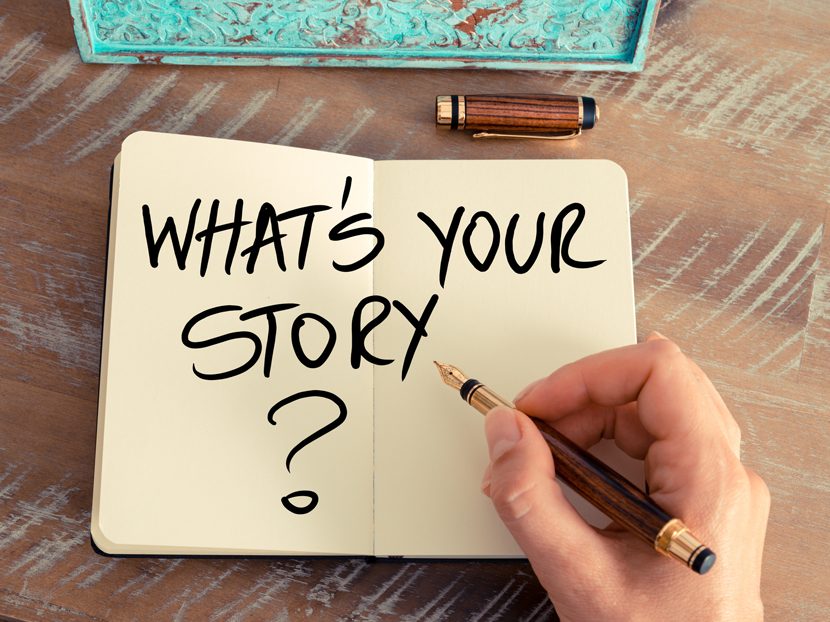How a Story Can Transform Your Business
Put story above products and services, and you will win raving fans.

It’s not the product or service but the story behind the product or service that wins.
TOMS Shoes launched with what can only be described as a supremely inferior product in the shoe market. It was hard to compare what TOMS was putting out with anything else on the market. It barely passed as a shoe at all. But it grew at an explosive rate and since launching in 2006, the company now sells roughly $400 million annually.
TOMS was at the forefront of the buy one, give one movement. For every pair of shoes sold, they donated a pair to those in need. It struck a nerve. People fell in love with the story and bought the shoes.
The company won because of the story it told. It’s that simple. It answered the question every consumer has in the current economy where everything is a commodity and you can purchase online, for less, in minutes — “Why should I care?”
The story itself doesn’t need to fit a specific mold. TOMS used charitable, social awareness at the core of its story. Tesla uses cutting-edge innovation and unlimited possibility. Zappos used the story of over-the-top customer service to win. A local Mexican restaurant near my home uses its family history and attention to ingredient-sourcing to cut through the noise. There are no rules to how you tell your story but it’s essential that you do if you want to rise above the commoditization.
Those who put story above products and services will win. Everyone else will slowly be devoured by the likes of Amazon and other versions of this monster who can sell commodity products and services better and cheaper than you will ever be able to do.
An old adage says that all things being equal, people will do business with who they know, like and trust.
In today’s economy, you shouldn’t try to acquire customers as much as you should be creating raving fans. These are the customers who will tell their friends about you, post on social media for you, pay a little more to work with you and want to see you win.
The Art of Storytelling
How do you weave storytelling into the fabric of your business? You start asking questions.
What is the history of the company? Why do you select the products you do? Where are the products made? How are they made? Who makes them? How are your teams trained? What is your culture, your purpose, your vision? What is the experience a guest of your showroom has? What is the experience someone has when they receive your product or service? Who designed the experience and why? What is the journey of your customer?
What are your teams doing today? Who are they? I mean, who are they really (hobbies, family, favorite teams, travel)? If you’re more expensive — why? How are your products manufactured, designed, delivered?
Then you answer these questions regularly. My No. 1 recommendation is to start shooting video. Share a team meeting. Follow your executives for a “day in the life.” Share something personal such as going from work to your kid’s ballgame. Give the market a glimpse inside the company so they begin to separate you from the robotic nature of e-commerce competitors.
Have your procurement team walk us through the process of selecting the products that make it into your showroom or on your product roster. How do they pick winners?
If you have a rich history in the business, walk us through it. If you’re a manufacturer, share with us the craftsmanship and the people behind the design and manufacturing of the product.
Consumers lump businesses into folders in their mind. A plumber is a plumber. A dentist is a dentist. A showroom is a showroom and so on. You can’t assume they’ll know what makes you unique. You have to bring the story to them.
The Power of a Story
There’s a Mexican restaurant about a mile from my house. I drove right past this spot hundreds of times — a strip mall with a no-frills sign out front. I’m only human. My mind painted a picture based on my assumptions and I simply filed it away, not even paying attention for years.
One afternoon a friend of mine asked if I’d ever eaten there. I shrugged it off. He went on to tell me about the third-generation family running the place. They purchase tomatoes from a specific farmer due to the flavor profile. The recipes are the same as they were over a hundred years ago. A local farmer provides the meats, one of only a few in the Midwest who met the restaurant’s standards. The owner still waits tables to get to know every patron. My friend mentioned that the owner remembers even the smallest details from a conversation they originally had.
That’s the power of story. It immediately became more than just another Mexican restaurant. I was a fan and I wanted to a part of the experience. I’m now a loyal patron who shares my experience with my friends. And we all want to see this little restaurant win.
If I’m in the market for what you sell, what makes you unique?
Why should I care?
The companies that can answer those questions and create an ongoing content strategy to weave the story into the products and services they sell will win.
What’s your story? I want to know. I want to become a fan.




